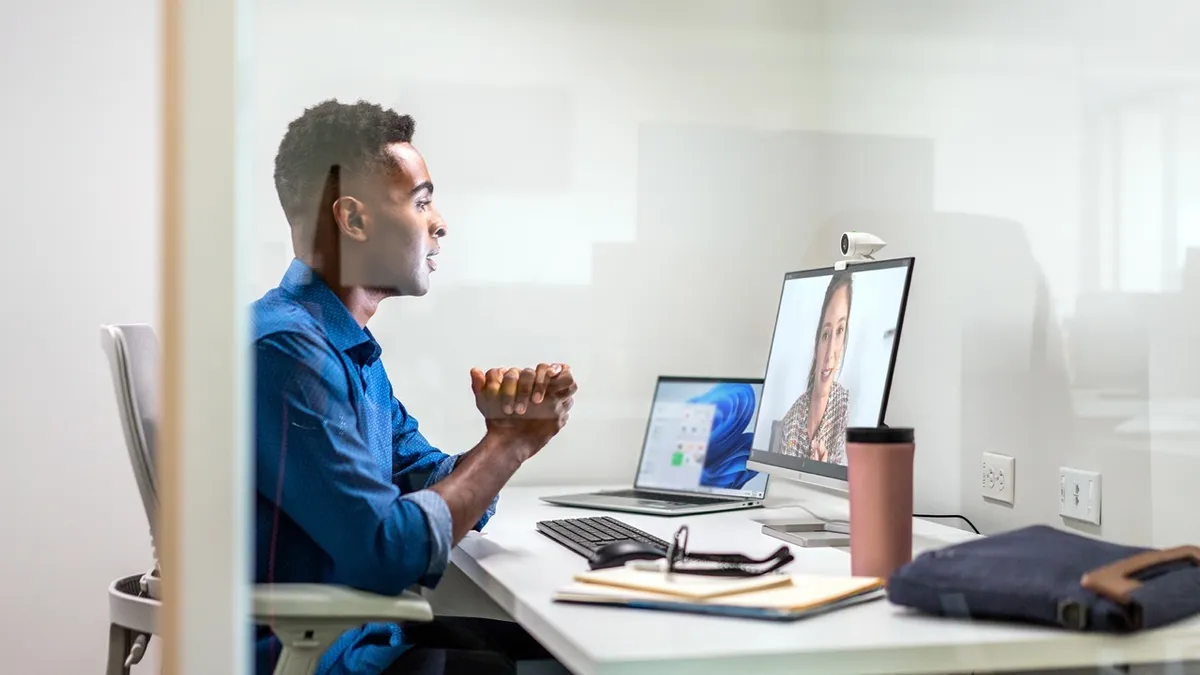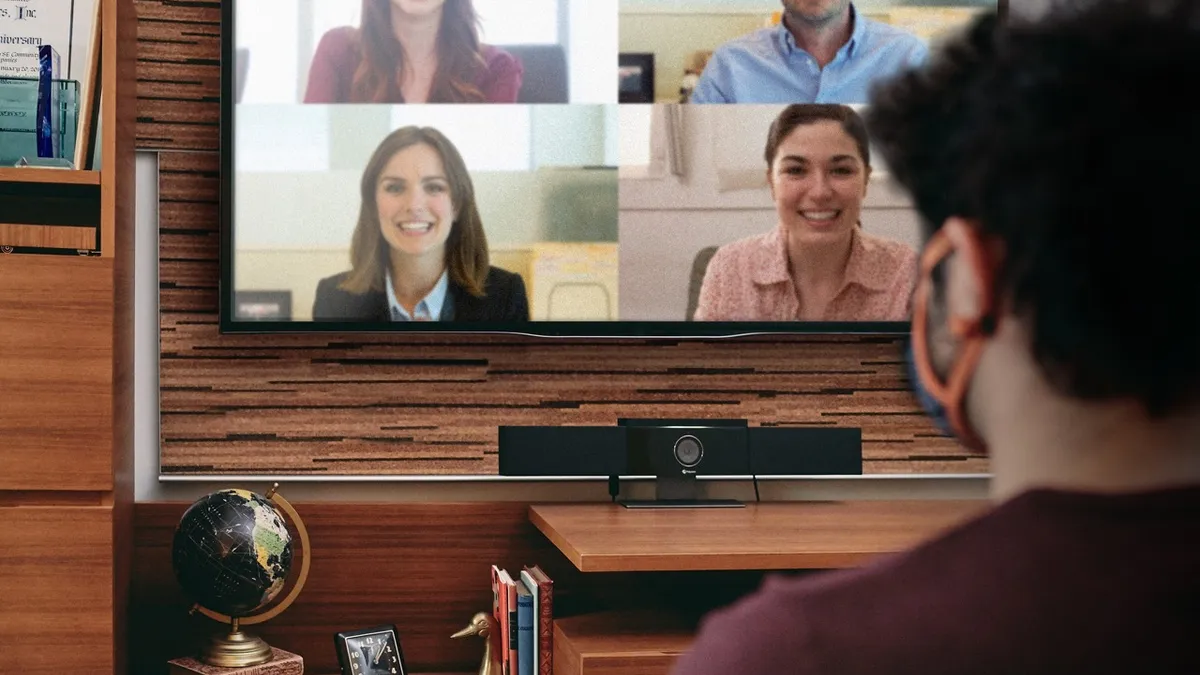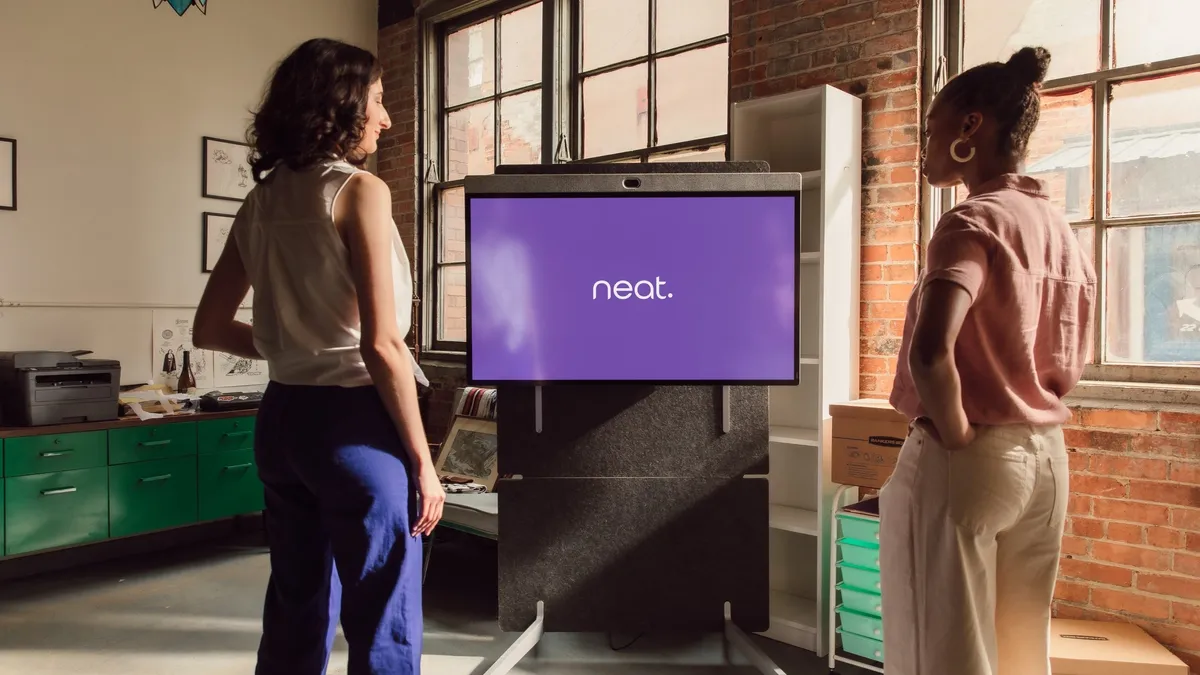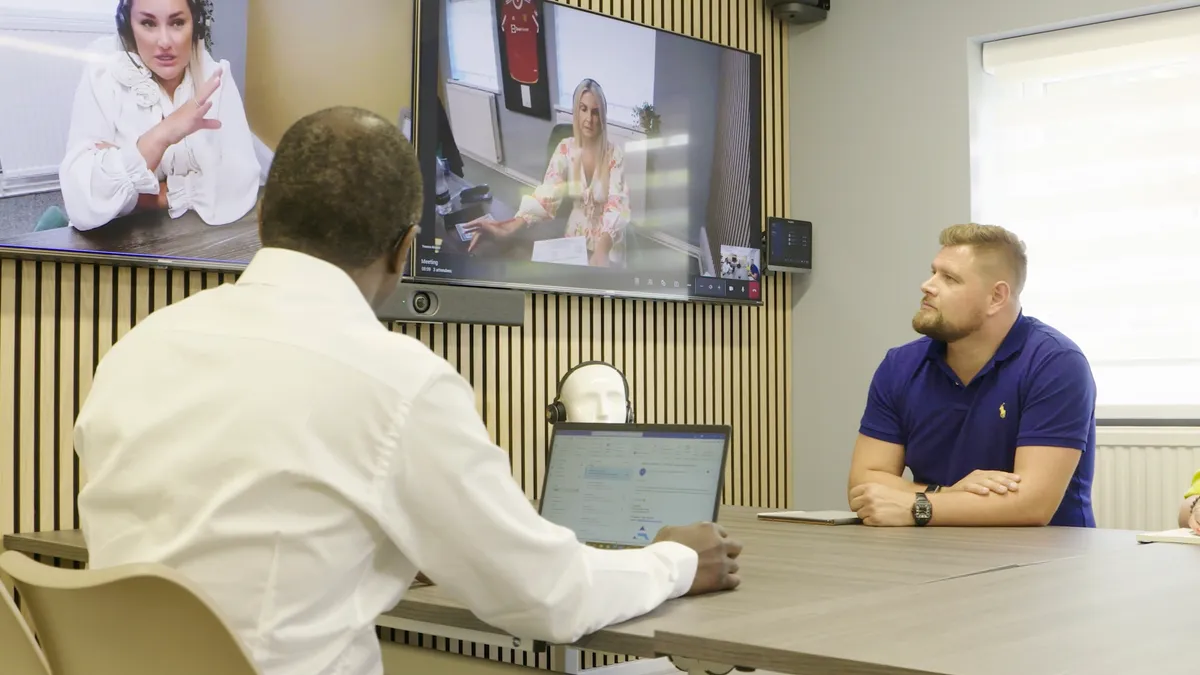In order to give you the best web experience on our site, we use cookies. By continuing to use our website, you agree to the use of cookies.
25 April 2024
7 minutes read
Employee research & insights to perfect workplace planning
Take the guesswork out of the workforce and workspace

In this article
Create better experiences for your workforce
Distributed work is challenging business leaders to rethink the spaces and technology needed to support a workforce, with employees working in more places than ever.
With the benefits of distributed work comes the difficulty of predicting where employees will be day-to-day. When they come into the office, will there be enough individual workspaces for them? Do they need dedicated equipment at home and in the office? Are meeting rooms sufficiently equipped with video so remote workers can easily participate?

Enabling productivity and creating the best experiences for your workforce – regardless of location – starts with understanding how and where people are working. This may seem like a moving target, but we’ve got research and expert insights that can help. For nearly a decade, Poly has teamed up with market research firm Factworks to study employee needs and behaviors according to their roles, technology usage, workspace preferences, and what they need to be successful.
Through this extensive research, we’ve identified six key roles that 97% of enterprise employees fit into.
This paper demonstrates how to use our post-pandemic persona research in your distributed work planning, understand how and where your employees are working today, and ensure they have what they need for successful collaboration. It starts with the three building blocks of hybrid workforce strategy: workstyles, workspaces, and work policies.


Understand Your Employees
In the current state of work, only 25% of roles spend more than half their time in the office. Personas are research-based employee profiles that provide observations and insights into their workplace needs and preferences. Personas also help you avoid a one-size-fits-all approach to communication and collaboration technology and instead provide devices that fit employee workstyles to increase productivity and reduce burnout.
Let’s take a quick look at the six Personas that most workers fall into.
The Connected Executive 16% of workforce. These tech-savvy leaders go wherever they’re needed to make decisions and solve problems.
- Communication pain points: Diversions, interruptions, unpredictable background noise
- In-office: Top users of focus rooms.
The Remote Collaborator 36% of workforce. Working from home or a remote center, these workers use multiple technologies to connect with colleagues and clients.
- Communication pain points: Inability to be clearly seen and heard, and don’t feel on equal footing with people in the meeting room.
- In-office: They spend over 1/3 of their time in huddle and small meeting rooms.
The Flexible Worker 21% of workforce. Splitting time between the office, home, and travel, these
workers are always innovating and switching between communication platforms.
- Communication pain points: Difficulty collaborating and connecting with colleagues.
- In-office: They frequently use video-equipped focus, huddle, and small meeting rooms.
The Office Collaborator 16% of workforce. These workers spend more time in the office than at
home. They are highly collaborative and open to new technology.
- Communication pain points: Background noise and constant disruptions in open office spaces, difficulty managing communication across devices.
- In-office: They spend over 25% of their time in meeting rooms of all sizes.
The Office Communicator 5% of workforce. This more traditional employee is most comfortable with familiar devices, like a desk phone.
- Communication pain points: Interruptions, background noise, lack of privacy on calls.
- In-office: They spend 84% of their time at their desk.
The Road Warrior 4% of workforce. These workers are always on the move, changing
environments, and want solutions that are highly portable and easy to use.
- Communication pain points: Noise on calls, unreliable connections.
- In-office: They spend much of their time in large and medium-sized meeting rooms.
Our persona research and insights will help you understand how to best design your employees’ work
experience. By understanding these six key groups, you can better meet their needs and provide the best collaboration technology to enable their best work consistently across spaces and locations.

How to Make Spaces Work for Employees
Understanding how much time each persona spends in the office and how much of that time is spent at
their desk vs. shared spaces helps you plan and design your office to accommodate employee needs based on the workstyle distribution across locations.
Your workforce needs the ability to do these three things during their workday: focus, connect, and learn.
Focus
Individual work, where minimal interruptions, and/or privacy, are needed.
Connect
Meeting with peers, socializing, creating the ties that build and maintain culture, and collaborating on problems, ideas, and innovations.
Learn
Formal training, all-hands events, lunch and learns, and presentations about new programs or policies.
What Makes Spaces Work For Your Employees?
Among the thousands of responses we received, there were some key insights for improving productivity in shared spaces at the office:
1. Focus Rooms
Primarily used by remote-centric workers to focus and have privacy on calls. Three things that would improve focus room productivity are:
- The ability to start calls without connecting the employee’s laptop,
- Easy access to collaboration tools on the employee’s choice of communication platforms.
- Technology that blocks distracting sounds.
2. Large Rooms
Primarily used for team meetings, collaboration sessions, and client meetings. Research shows that as room size grows, so does the need for intelligent video cameras. Three things that improve medium room productivity are:
- Cameras that automatically frame everyone in the meeting room.
- The ability to connect a laptop or join a call using the in-room audio/video equipment to share content on different collaboration platforms.
- Digital whiteboard and the ability to annotate content being shared.
3. Medium Rooms
Primarily used for executive/board meetings, training and education, and departmental meetings. Capabilities that simplify collaboration, and put participants in and out of the room on equal footing, improves productivity, including:
- Cameras that automatically frame everyone in the room and follow the conversation, paired with speakers that deliver crystal-clear, room-filling audio.
- Digital whiteboard and the ability to annotate content
- Easy to use, accessible controls for lighting, drapes, and other room features.
Creating the best experiences for employees requires rethinking your current spaces. Are all your meeting spaces equipped for video? Are there enough focus rooms and casual meeting spaces to match employee needs? Are desks assigned or unassigned?
In fact, managing the question of assigned or unassigned seating is a real challenge for hybrid work planning. Which brings us to work policies.
Establish Your Work Policies
Work policies define the guidelines of your distributed work strategy and how it enables employees to be productive wherever they are. Using Personas helps you design policies that create the best work experiences for your employees by answering key questions, like whether seating is assigned. Here are a few examples of things to consider as you develop your work policies.
Key questions about your work policies:
Should seating be assigned?
All desks could be assigned based on your persona breakdown at each location, which ensures everyone has the technology they need.
Desks could be assigned only for office communicators and office collaboratorswho spend the most time at their desks in the corporate office.
Desks could be assigned according to a guideline, like having assigned desks for those in the office 3+ days a week, and shared hoteling space available for drop-ins.
How do you define “the office?”
Your organization prefers a traditional office space.
Your organization’s office definition includes co-working spaces or hubs where remote workers gather.
Your locations are designed around the activities employees perform there.
How will you define your occupancy policies?
Everyone is in the office four days a week and remote on Friday.
Employees come into the office on two days of their choosing each week.
Employees must come in for the monthly all-hands meeting and otherwise can work where they choose.
Employees can work anywhere but have set hours each day when everyone must be online and available.
How do your work policies support or impact remote workers?
Update old rules and existing technology that were designed primarily to support in-office workers.
Establish policies and technology to give your remote workers equal presence with those in the office.
Establish policies and technology that encourage and simplify collaboration from everywhere.

Put it all together in your plan
- Personas
- Workspaces
- Work Policies
- Your Plan
Once you’ve identified the workstyle Personas in your organization and aligned it to your distributed work policies, you can use this information to outfit your people and workspaces with the technology they need to be successful everywhere they work. This research-based approach to hybrid planning gives you confidence that the spaces you design will be well utilized by employees.
Build Into Your Plan Audio and Video That Meets Collaboration Requirements
Audio and video are key considerations in your employee experience.
In our research, 79% of workers said they expected their employer to provide equipment across home and office spaces.
For work to be seamless regardless of location, workers need consistency across spaces to minimize the friction in their transitions.
70% of workers say hybrid collaboration spaces are more important now.
It’s important to provide your employees with a broad portfolio of enterprise-grade devices that match their preferences, productivity needs for their role, and comfort. Just like you provide employees with a laptop that will maximize their ability to get things done, providing them with enterprise-grade audio and video that fits their persona will enable them to focus, collaborate more easily with colleagues, participate in virtual meetings, and work effectively wherever they are.
For group spaces, the most important decision makers aren’t always in the room. It’s important for them, and everyone else joining the call, to be on equal footing with participants physically in the office. With video conferencing solutions that enable everyone to be clearly seen and heard, remote workers can follow the discussion, share ideas, and fully participate in meetings.

POLY CAN HELP
Poly has a range of solutions from free tools to consultative engagements that will guide you through an end-to-end process. We can help you profile workstyles and define and deliver work policies that fit your organisation. We will ensure that you can confidently outfit individual employees and meeting spaces that support your hybrid work requirements today and in the future and deliver high-quality collaboration experiences no matter where employees are.




















